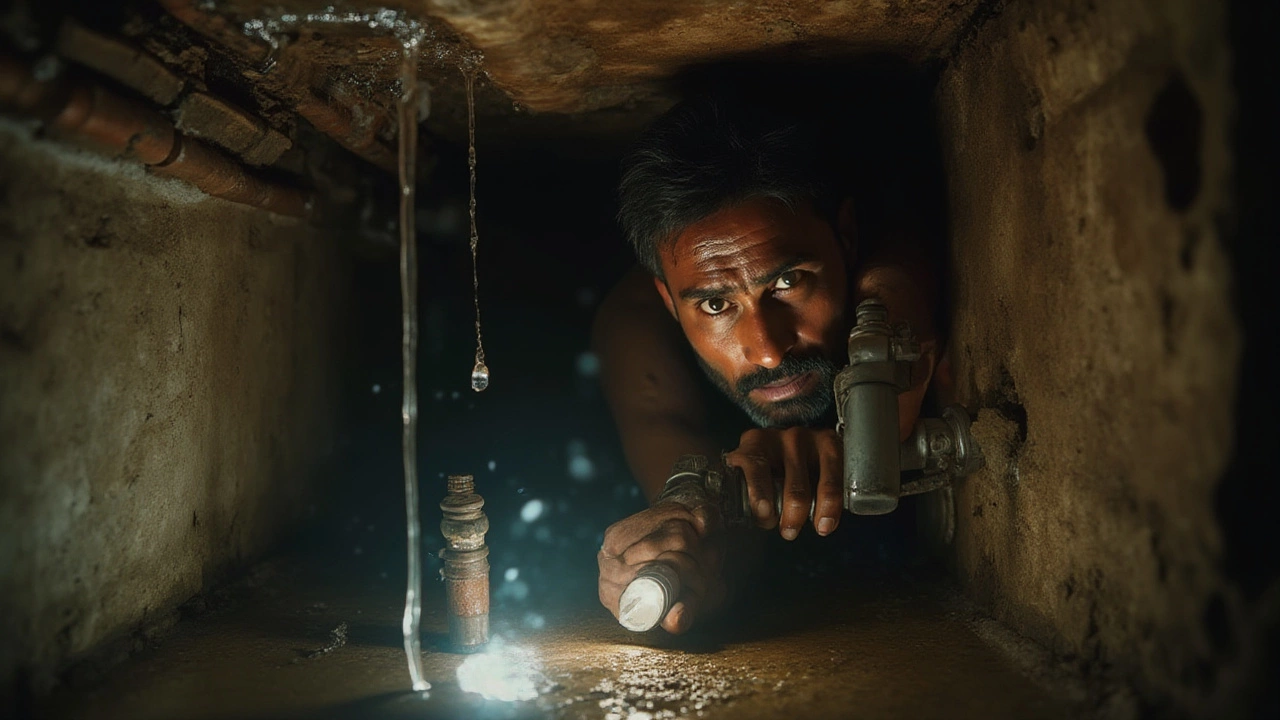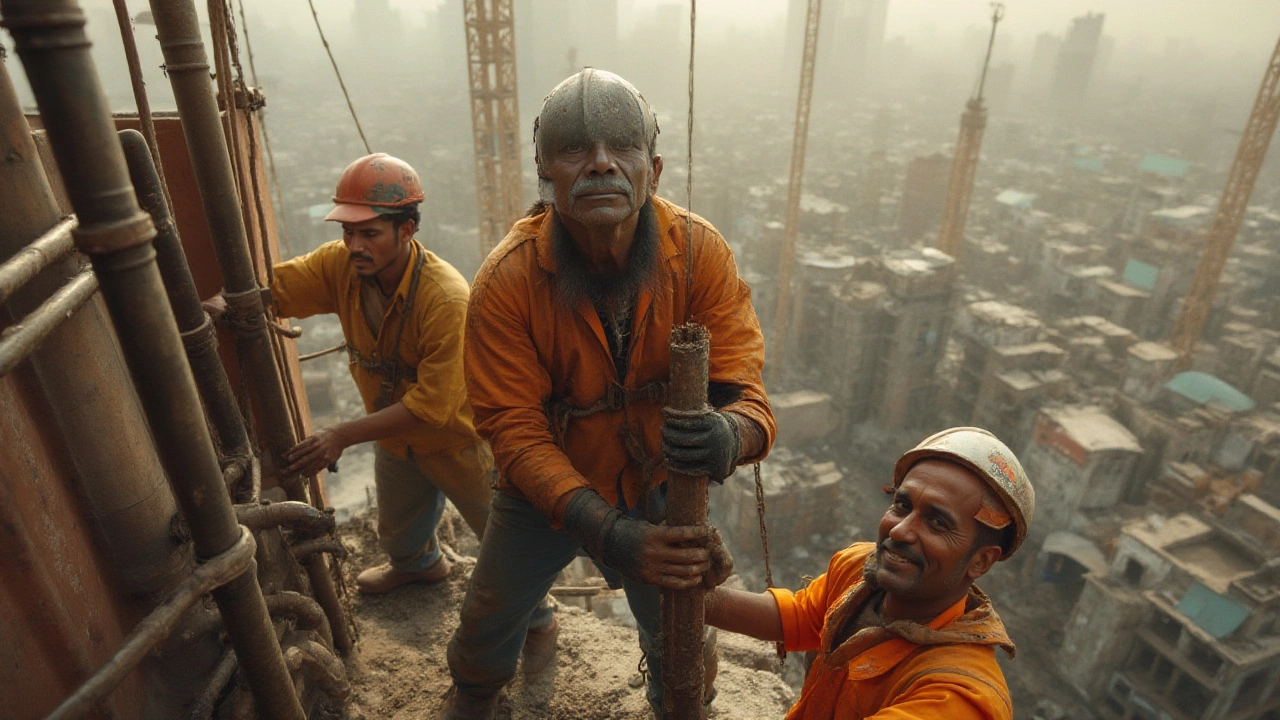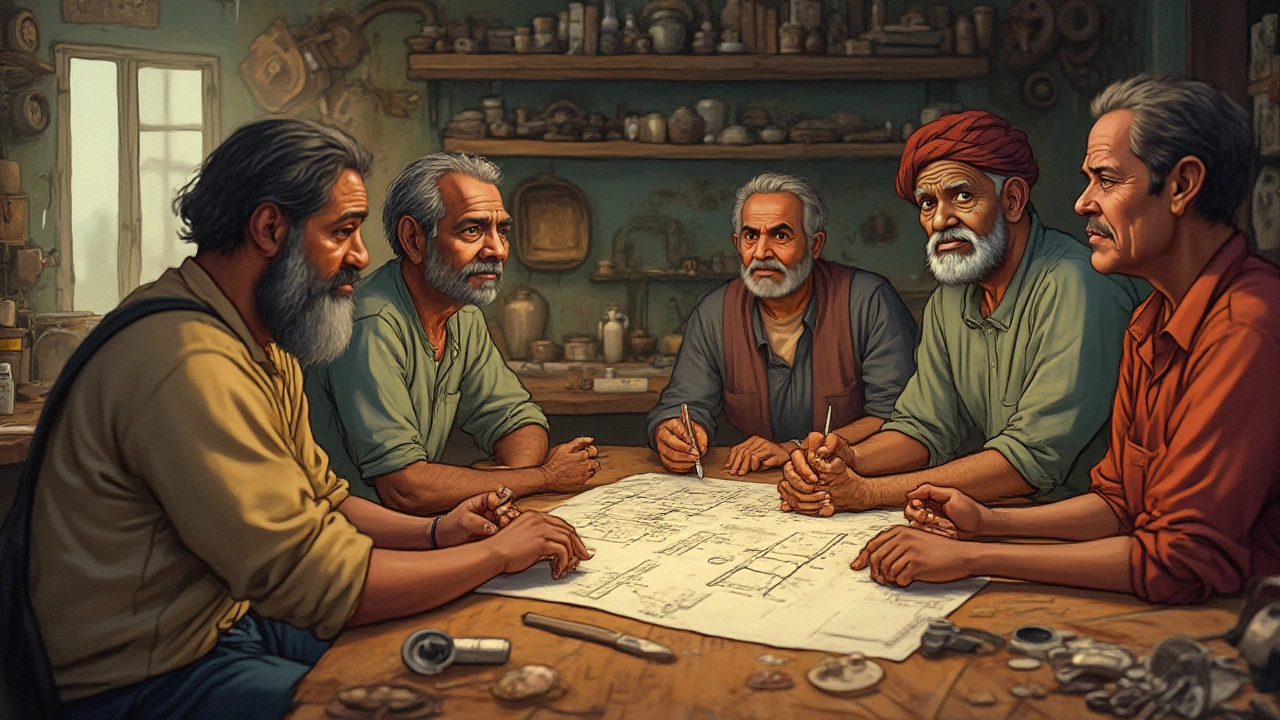
Imagine this—you're wading through ankle-deep water at 2 AM, flashlight between your teeth, hands full of tangled pipes, and a customer pacing in the hallway, worried about water ruining their floors. That’s not a movie set. For plumbers, this is just another Tuesday night. So, what actually makes plumbing the hardest, sweatiest, and sometimes downright weirdest trade out there?
Why Plumbing Looks Simple (But Isn't)
Most people see a plumber fix a leaky tap and think, "How hard can it be?" Grab a wrench, twist a pipe, collect your payment. The truth is, a leaky faucet is the tip of a frozen iceberg. Plumbing isn’t just pipework—it’s a daily battle with hidden systems, unexpected problems, and split-second decisions where one mistake means hundreds or thousands in damage. Laying new pipes in a fresh house? Not so bad. But dealing with decades-old rusty pipes buried behind tight drywall? That’s where the real headaches start.
Take old homes—each one is a mystery box. No two have the same plumbing layout, especially those with five decades of "creative" DIY fixes. One plumber once told me, "You don’t know what you’re up against until you open the wall." A study by the Plumbing-Heating-Cooling Contractors—National Association found that unpredictable challenges are the top complaint from professionals, noting that 41% said dealing with existing infrastructure is the hardest part. And it’s not just the buildings; water pressure, pipe materials, municipal codes—all vary wildly from place to place.
Add in today’s eco-friendly rules, changing building codes, and frequent advances in technology, and suddenly, that simple repair isn’t so simple. Plumbers must keep learning, adapting, upgrading tools, and making sure those fancy new water heaters actually fit behind the closet door. No, it’s never just "tighten a bolt and go home."
The Real Dangers Lurking in Plumbing Jobs
People don’t think of plumbing as dangerous work, but it absolutely is. Slippery floors? Check. Sharp metal shavings from cut pipes? Check. Confined spaces where the air feels thin? Double check. Did you know plumbing ranks consistently among the higher-risk trades for injuries? According to the U.S. Bureau of Labor Statistics, plumbers get injured on the job far more than office workers—cuts, burns, slips, and even lung risks from chemicals or mold all make the list.
Crawling into crawlspaces under houses or squeezing behind water heaters in musty basements is just a day at the office. You're often exposed to sewage systems, and let’s be real, that’s not just unpleasant, it’s a health hazard. Hepatitis A and E.coli can survive in wastewater for ages. Gloves, masks, and even full hazmat suits sometimes aren’t enough, especially on sewage jobs. And then there’s the risk of electrical shock–water and live wires don’t mix. One accidental move with a metal tool can mean a trip to the ER. Here’s a stat to chew on: around 25% of plumbing injuries happen in these cramped, awkward areas, according to a 2023 trade report.
Heat is another enemy—both from pipes carrying boiling water and from working in sweltering attics in the summer. Ever tried soldering a joint with sweat dripping into your eyes? Not fun. And bad backs—ask any veteran plumber. Lifting water heaters, bending under sinks, hunching to fit into crawlspaces all day leaves its mark. A lot of plumbers retire early, not by choice but because their bodies give out. If you have a dog like my Bruno, he'll tell you, watching a tired plumber collapse on the couch is a regular evening event, not just after an unusually tough job.

Biggest Technical Headaches (And How the Pros Tackle Them)
For every simple toilet fix, there’s a clogged sewer line waiting to turn a routine call into a nightmare. Blocked drains, old iron pipes that crumble when you touch them, and pipes hidden behind complex tile or concrete can grind progress to a halt. Plumbers run into everything from tree roots growing into pipes to botched DIY repairs where homeowners used glue instead of actual pipe sealant. Do it wrong, and you could flood not just your customer's house but sometimes their neighbors' too—especially in apartment buildings.
"Most people don't realize—plumbing isn't just about water. It's about problem-solving and thinking three steps ahead, every time." – Mark Allen, Master Plumber, quoted in Plumbing News Monthly, Feb 2024.
The hardest part technically? Finding leaks you can’t see. The water stain on the ceiling isn’t always right under the burst pipe. Water travels along beams, around obstacles, and drips somewhere completely unexpected. Plumbers use thermal cameras, moisture testers, and sometimes sheer luck to pin down the source. Working with new plumbing materials (like PEX or CPVC instead of copper or iron) adds another twist: not all fittings match, and the wrong combination means leaks or failures. Here’s a tip: If you’re learning the trade, get comfortable using every kind of tool and fitting, not just the ones they taught you at the training school.
Modern plumbing also means dealing with smart devices. Many homes now have digital water heater controllers, Wi-Fi enabled leak detectors, and complex recirculating pumps. Some of these systems break down at the worst possible time—often due to a bad connection or outdated firmware—so plumbers are constantly crossing over into IT troubleshooting. When you mix water with electronics, mistakes can be expensive and sometimes catastrophic.
| Common Technical Plumbing Challenges | Typical Time to Fix |
|---|---|
| Hidden leaks in walls | 2–5 hours |
| Tree root intrusion in pipes | 4–8 hours |
| Broken cast iron pipes | 3–7 hours |
| Complex multi-story drain blockages | 4–10 hours |
| Old DIY repairs gone wrong | 1–6 hours |
Each of these problems typically chews up half a workday, sometimes more. Plumbers almost never get calls for "easy jobs." If there’s a silver lining, it’s that every tough fix is a chance to build real expertise—and a good reputation. Customers remember the guy who saved their house from a burst pipe—not the one who changed out their faucet in ten minutes!
Code Red: Navigating Permits, Rules, and Hidden Hazards
Red tape probably doesn’t spring to mind when you think about plumbing, but it’s there, lurking in every city bylaw, regulation, and permit requirement. Every job that touches a municipal supply or sewer line needs at least one permit. Skip a step, and your work isn’t just illegal, it could void home insurance or even bring down fines that cost more than the job paid. Plumbing codes change constantly, and what was fine last year might be banned this July—no joke, even the diameter of vent pipes or the angle of bends can change from city to city.
Getting permits means paperwork, inspections, and sometimes dealing with city inspectors who have their own interpretations of the rules. Did you know some cities force plumbers to do “smoke tests” to check for hidden leaks? They pump a harmless, visible smoke through pipes to pinpoint tiny cracks. Miss a single step, and you’re back to square one. It’s a whole different skillset—reading codebooks, drawing permit diagrams, knowing shortcut routes through city offices to get forms stamped fast.
Another code-based headache comes when old parts are discontinued, but you still have to fix existing installations without ripping apart buildings. Sometimes you’re forced to «MacGyver» solutions with what's available. But creativity is a double-edged sword: fix something creatively, and inspectors will either love or hate it. And don’t forget about environmental regulations. Today's codes might require low-flow toilets or greywater systems—and the penalties for ignoring these can be thousands of rupees, even if the customer insisted, “just put it back the way it was.”
If you're ever considering a plumbing career—or just want to understand your plumber better—ask them how much time they spend in front of forms versus under sinks. The stories you hear might surprise you.

Tips From the Trenches: Becoming a Problem-Solving Pro
I’ve chatted with dozens of plumbers (and watched plenty more on the job) and two things stand out: first, no one’s really "seen it all," because there’s always a surprise waiting behind the next wall. Second, the best in the trade are masters of staying calm when things go sideways. Here are some tips that come straight from real-world experience:
- Always expect the unexpected. Bring spare parts and extra types of fittings—you'll need them when suppliers are closed and the standard pieces don’t work.
- Invest in a great flashlight. Sounds simple, but good light is your best friend in dark crawlspaces.
- Take pictures before you open anything, so you can put it back together if the job gets more complicated than planned.
- Read local plumbing codes every year—they really do change more often than you think.
- Never skip on safety gear. Gloves, goggles, knee pads, and a mask if the air is bad. Your health comes before any urgent fix.
- Keep your sense of humor. Plumbing disasters make for the best stories—if you survive them!
And for the homeowners? Don’t pour grease down your drains, don’t flush "flushable" wipes, and for the love of your plumber, don’t try to fix a burst pipe with duct tape. Save yourself a headache (and possibly a renovation bill) by calling in a pro before a small issue becomes a disaster.
Plumbing reveals its hardest challenges when you least expect it, from the stinkiest crawlspace to city halls that feel like obstacle courses. It’s demanding and unpredictable, but that’s why the pros take pride in every repair that goes right—because sometimes, just keeping the water flowing is tougher than anyone thinks.
